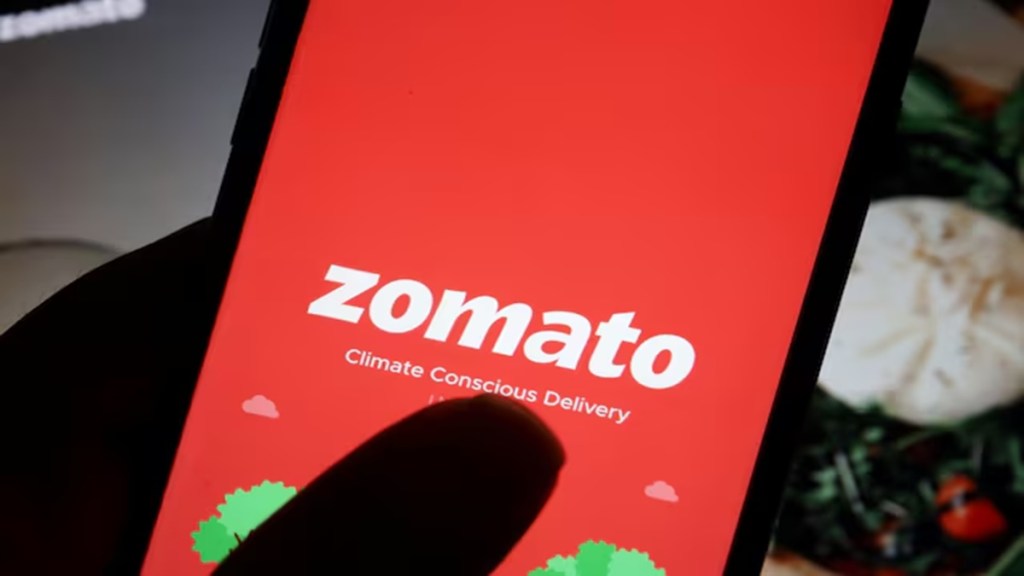The online food delivery giant, Zomato is now part of the Sensex, replacing JSW steel on Friday (December 20). Moreover, this step forward is seen as a major move by the tech driven food company. The Zomato shares are firming up in Friday trade. Its market capitalisation is currently at Rs 2.75 lakh crore, with a price-to-earnings (P/E) ratio of 345.04. At this level, this food delivery giant’s valuation has surpassed some of India’s most prominent automotive companies – Tata Motors, and Bajaj Auto.
Tata Motors which is an Indian multinational automotive powerhouse, has a market capitalisation of Rs 2.74 lakh crore as of now, while Bajaj Auto, a leading two-wheeler and three-wheeler manufacturer is valued at Rs 2.51 lakh crore, highlighting that Zomato’s market cap is now higher than the two key players in the market.
Let’s take a look at the reasons behind this transition and what it means for both the companies, the replaced and replacing.
Why Zomato Made the Cut
Arch rival of Swiggy, Zomato’s inclusion in the Sensex is a result of its strong performance in 2024. The company’s stock has surged by 132 per cent year-to-date, significantly outperforming the 9.78 per cent growth of the BSE Sensex. This growth also gave a positive trend to the company’s financial performance.
“Zomato-owned Blinkit’s recent launch of ‘Bistro’, a 10-minute food delivery app, was a low-key affair. Our recent checks, however, suggest the platform opens up a wide range of use cases that were hitherto not getting adequately addressed through Zomato’s own food delivery app. For example, the Bistro app offers a wide range of convenience food at relatively affordable price points through self-operated kitchens, akin to the ubiquitous canteen service. In fact, Bistro’s within-10 minutes-delivery proposition should help the company better penetrate breakfast and evening snacks meal consumption in high density micro markets in Tier 1 cities, while also improving the visibility for its value meals (Zomato Everyday) proposition. Bistro’s selection and price points suggests it will likely compete with Zepto Café rather than Swiggy’s Bolt or Zomato’s own 15-min food delivery offering, thereby reducing chances of conflict of interest claims by third-party restaurant partners. While we await more details before baking in the impact of Bistro’s launch in our model, this could help Zomato better penetrate the small ticket food consumption space in India,” said Swapnil Potdukhe in a report by JM Financial Institutional Securities about Zomato.
Zomato share performance
The stock is currently trading at Rs 289.20, a 2.25 per cent gain over the past five days.
If we look at the last six months performance of the company, its shares have surged by 46.76 per cent, adding Rs 92.15 to its value. And when analysing it on Year-to-date basis, Zomato’s shares have skyrocketed by a staggering 132.29 per cent, gaining Rs 164.70 in 2024 alone.
While Zomato does not offer a dividend yield, it has achieved a 52-week high of Rs 304.70, significantly up from its 52-week low of Rs 120.20.
Zomato: Key highlights
Revenue- Rs 4,800 crore, up 68.5 per cent year-on-year
Net Income- Rs 176 crore, a rise of 388.89 per cent
Net Profit Margin- Improved to 3.67 per cent, up 191 per cent year-on-year
Also Read: Hamps Bio debuts on BSE SME with a 90% premium, Listing at Rs 96.90 against issue price of Rs 51
Further enhancing its performance, the food tech-giant acquisition of Blinkit, coupled with its efficient cost management and growing market dominance, has also made it position in the spotlight in the tech-driven food delivery sector.
What Happens When a Stock Joins Sensex?
The inclusion of Zomato in the headline indices, Sensex means passive funds and exchange-traded funds (ETFs) that track the index will have to buy Zomato shares to match the index composition. This adjustment is expected to result in USD 513 million worth of inflows into Zomato stock, according to Nuvama Research.
On the other side, JSW Steel’s exit will lead to USD 252 million in outflows as funds rebalance their portfolios. This process typically occurs during the last 30 minutes of trading on the day of the index change, based on volume-weighted average prices (VWAP).
A look at how Zomato began its journey
Zomato’s journey to becoming a Sensex constituent began with its public issue in July 2021, which raised Rs 9,375 crore. The price band for the IPO was kept between the range of Rs 72 to Rs 76 per share, and the company made its debut on the Indian bourses on July 23, 2021.

